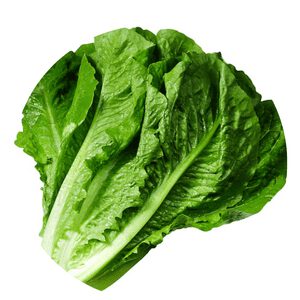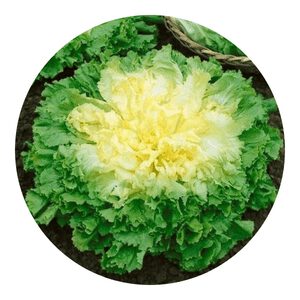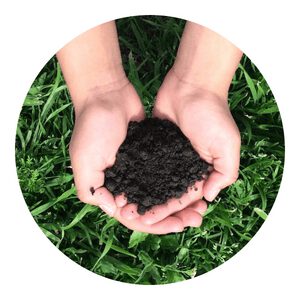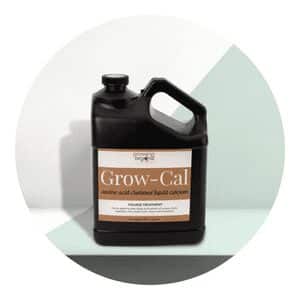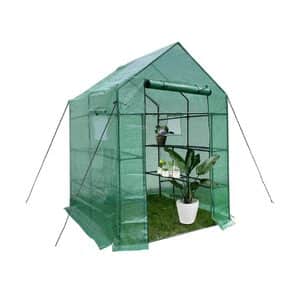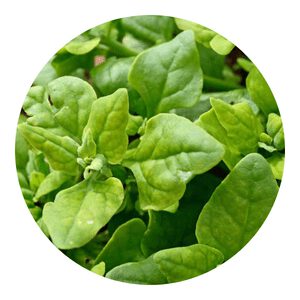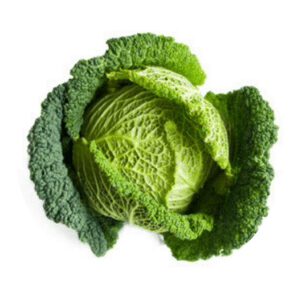How to Grow Lettuce in Canada
Growing organic lettuce in Canada can provide tasty and nutritious salads, wraps and sandwiches while helping to support a healthier environment.
With the right climate and soil conditions, Canadians can have access to high-quality organic produce without having to depend on imported products.
Whether you are a beginner with little gardening experience or an experienced green thumb, this article will provide all the necessary information on how to grow organic lettuce within Canada’s climate and soil conditions.
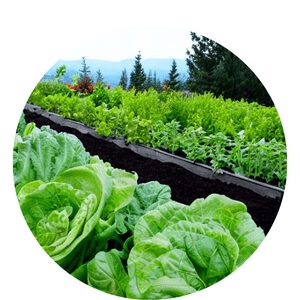
Canada Lettuce Menu
Growing lettuce in Canada
Growing lettuce in Canada can be a rewarding experience, and with the right knowledge, you’ll be able to grow organic lettuce that is both delicious and nutritious.
Organic farming techniques are becoming more popular as people seek out healthier food sources, and learning how to grow organic lettuce in Canada is the perfect way to get started on your own sustainable garden.
Organic farming emphasizes soil health and quality over quantity of produce; it relies heavily on natural fertilizer such as compost, mulch, and green manure for optimal growth.
You’ll also need to pay attention to factors such as temperature during planting season, water availability, weed control methods, pest management strategies, and harvesting techniques.
It’s important to understand the growing conditions of each region when selecting varieties of lettuce so that you can achieve higher yields throughout the season.
Organic Gardening Methods
Organic gardening is becoming increasingly popular as people strive to improve their health, the environment and overall quality of life.
It’s also no secret that organic produce tastes better than conventionally grown fruits and vegetables.
If you’re interested in learning how to grow organic lettuce in Canada, here’s what you need to know.
Organic gardening requires a bit more effort than conventional gardening since it involves preparing the soil for planting, controlling weeds, and taking steps to induce natural pest control methods.
The process starts with enriching the soil with compost and manure for nutrients.
Mulching around the plants will help keep weeds at bay while providing essential moisture retention and insulation from extreme temperatures.
Additionally, you’ll want to choose an appropriate variety of lettuce that has been developed specifically for growing in Canada’s climate conditions.
Soil preparation
When it comes to growing organic lettuce in Canada, soil preparation is key.
A well-prepared soil will provide the nutrients, water and air necessary for an abundant harvest.
For those who want to grow their own organic lettuce in Canada, here are a few tips on how to get started.
The first step in preparing the soil for planting is to conduct a thorough assessment of the area where the lettuce will be planted.
The soil should be tested for pH levels and nutrient content in order to determine if any adjustments need to be made before adding fertilizer or amending with compost or manure.
Once this has been done, it’s important to till and loosen the soil so that roots can easily penetrate through it and establish strong contact with needed nutrients and water.
Seed selection and planting
Growing organic lettuce in Canada can be a rewarding experience, but the key to success is selecting the right seeds and planting them correctly.
When selecting seed, look for varieties that are suited to your climate and region.
In Canada, most lettuce varieties prefer cool temperatures with plenty of moisture, so choose seed varieties specially adapted for this type of environment.
Additionally, select seeds from organic suppliers whenever possible to ensure that your plants will not be exposed to any potentially harmful chemicals or toxins.
When it comes time to plant your lettuce, preparation is key.
Make sure you have fertile soil that has been enriched with compost or other natural fertilizers and is free from weeds.
Planting in raised beds can help protect the plants from pests and flooding while allowing you to better control temperature and moisture levels.
Lettuce from Canada, homegrown and organic, Simply the freshest way to eat your greens. Grown with intention and lots of care, You'll look out onto the fields and take in the air. No chemicals or pesticides needed here, Green thumbs around combine with nature to appear. Root systems strong and growing tall, Eat fresh lettuce right in your own backyard hall. Organic lettuce available for everyone's delight, From coast to coast this food will make you feel so bright!
Chappy The Gardener
Organic fertilizer options
Organic fertilizer options are essential for growing organic lettuce in Canada.
When looking for the best organic fertilizer option, it is important to consider what kind of lettuce you are trying to grow, as well as the climate where you live.
Different types of organic fertilizers provide different nutrients that can help plants flourish.
Fertilizers made from animal products like manure provide nitrogen and phosphorous which are essential for a healthy lettuce crop.
Composting can also be an effective way to create a nutrient-rich soil environment.
Additionally, there are several types of mineral-based natural fertilizers such as rock dust or kelp meal that offer additional nutrients and minerals to the soil.
To ensure your lettuce grows best, it is helpful to supplement your main source of organic fertilizer with smaller amounts of other forms throughout the season.
Pest and disease management
Organic lettuce is a popular vegetable that can be grown in Canada.
While it has many health benefits, there are also potential problems associated with growing organic lettuce.
Pest and disease management is an important aspect of organic gardening, especially when it comes to lettuce production.
In order to minimize the risk of pest and diseases affecting your organic lettuce crop, there are several steps you can take.
Be sure to rotate crops so that the same ones aren’t planted in the same spot year after year; this helps reduce the spread of pests between plants.
Additionally, use natural methods such as mulching or crop covers to protect plants from infestation by insects or other pests.
Finally, inspect your lettuces regularly for signs of disease and remove affected plants immediately so they don’t spread their infection further.
Hydroponic and Aquaponic Systems
Hydroponic and Aquaponic Systems are a great way to grow your own organic lettuce in Canada.
These systems allow you to cultivate plants with minimal effort and can produce high yields of nutrient-rich, healthy vegetables.
Hydroponics uses mineral nutrient solutions in water to allow the plants to absorb nutrients without the need for soil, while aquaponics combines aquaculture (the raising of fish) with hydroponics (cultivating plants without soil).
The combination of these two technologies allows users to create an integrated ecosystem that is both sustainable and efficient.
The key benefit of using a hydroponic or aquaponic system is that it requires less space than traditional farming methods, making it ideal for home gardeners who may not have access to large open fields for cultivating crops.
Setting up a hydroponic or aquaponic system
Setting up a hydroponic or aquaponic system is an ideal way for Canadians to grow organic lettuce in their homes.
Hydroponics are a method of gardening that does not use soil, but instead relies on nutrient-rich water.
Aquaponics combines both hydroponic and aquaculture techniques, creating a complete eco-system that grows both plants and fish.
Both methods have advantages when it comes to growing organic lettuce, as they require fewer resources than traditional farming methods.
Both systems require some initial set up including purchasing the right equipment and materials such as pumps, reservoir tanks, air pumps and pots of various sizes.
The type of container used will depend on the size of lettuce being grown; smaller varieties like butterhead can be grown in smaller containers while larger varieties like romaine can be grown in larger ones.
Advantages and disadvantages
Organic lettuce has become increasingly popular in Canada, as more people seek out sustainable, healthy options for meals.
Growing organic lettuce carries both advantages and disadvantages that should be taken into consideration when deciding to grow it at home.
Organic lettuce is grown without the use of pesticides or chemical fertilizers and therefore can be safer for consumers than conventionally-grown varieties.
Furthermore, since there are no harsh chemical residues on the plants, organic lettuce can also have a better taste and texture compared to non-organic versions.
Additionally, if you grow your own organic lettuce at home you can be sure of its freshness and know exactly what is going into your food.
Maintaining optimal growing conditions
The right soil type, moisture levels, sun exposure and temperature are all factors that will play into how successful your crop will be.
Preparing the soil properly before planting is also important; adding compost or other organic matter can help improve nutrient quality and drainage for better plant health.
Once you’ve planted your seeds or seedlings, ensuring that the environment is stable for growth is key to optimum production.
Organic Fertilizer for Lettuce
Organic fertilizers are a great choice for growing lettuce as they provide essential nutrients for the plant while also promoting healthy soil.
One popular organic fertilizer for lettuce is compost.
Compost is made from decomposed organic matter such as food scraps, yard waste, and other plant materials.
It is rich in essential nutrients like nitrogen, phosphorus, and potassium, as well as beneficial microorganisms that help improve soil structure and fertility.
To use compost as a fertilizer, simply mix it into the soil around your lettuce plants.
Another organic fertilizer that is good for lettuce is blood meal.
Blood meal is made from blood and is high in nitrogen. Nitrogen is an essential nutrient that helps plants grow strong and healthy.
Blood meal can be added to the soil or used as a side-dressing.
Fish emulsion is also a good organic fertilizer for lettuce.
It is made from fish waste and is high in nitrogen, phosphorus, and other essential nutrients.
Fish emulsion can be added to the soil or used as a side-dressing.
In addition, bone meal is another organic fertilizer that can be used for lettuce.
It is made from the ground-up bones of animals and is high in phosphorous, which is essential for root growth.
It’s important to keep in mind that when using organic fertilizer it’s better to under-fertilize than over-fertilize, as over-fertilization can cause growth problems for lettuce.
It’s also important to follow the recommended application rates on the fertilizer packaging.
Overall, by using organic fertilizers, you can promote healthy growth in your lettuce plants and support a sustainable gardening practices.
How to apply fertilizer
Applying organic fertilizer to your lettuce plants is a simple process that can be done in a few easy steps:
- Prepare the soil: Before applying fertilizer, make sure the soil is loose and well-draining. You can do this by tilling or turning the soil with a garden fork.
- Determine the appropriate fertilizer: Different types of organic fertilizers have different application rates. Be sure to check the package instructions or consult a gardening expert to determine the appropriate amount of fertilizer to use.
- Mix the fertilizer with the soil: Once you have determined the appropriate amount of fertilizer to use, mix it evenly with the soil in the area where your lettuce plants will be growing. This can be done by hand or with a garden fork.
- Apply the fertilizer: When the fertilizer is mixed with the soil, it’s ready to be applied. Spread the mixture around the base of the lettuce plants, being careful not to damage the delicate foliage.
- Water the fertilizer in: After applying the fertilizer, water the soil well to help it absorb the nutrients and encourage deep root growth.
- Repeat as needed: Organic fertilizers may need to be applied more than once during the growing season, depending on the needs of your lettuce plants. Be sure to consult the package instructions or a gardening expert to determine the appropriate application schedule.
It’s important to note that when using organic fertilizers, it’s better to under-fertilize than over-fertilize, as over-fertilization can cause growth problems for lettuce.
And also, it’s important to ensure that the fertilizer you’re using is labeled as safe for food crops.
By following these simple steps, you can ensure that your lettuce plants receive the essential nutrients they need to grow strong and healthy.
Considerations for Canadian climate
Growing lettuce in Canada is a great way to add some freshness and nutrition to your diet.
But there are certain considerations you should keep in mind when planning to grow organic lettuce in Canada.
The climate of Canada is highly influential on the ability of crops to grow and thrive, so it is important that gardeners understand the unique soil and weather conditions before planting any vegetables.
Temperature fluctuations, sunlight availability and precipitation patterns all have an effect on the growth of organic lettuce in Canada.
Cold winters can be especially challenging for newly planted seedlings so proper preparation ahead of time should be taken into account when making decisions about what types of lettuce varieties can survive Canadian climates.
Soil type also plays an important role as different varieties prefer certain types over others.
Greenhouse Growing
Greenhouse Growing is an increasingly popular way to grow organic lettuce in Canada.
With the right conditions and equipment, it can be a great option for those looking to grow their own food sustainably.
Greenhouse growing involves creating a controlled environment using special materials and techniques that enable gardeners to extend their growing season and produce much higher yields than conventional outdoor gardens.
By controlling the temperature, humidity, light exposure, and other environmental factors inside of the greenhouse, plants are grown under optimal conditions for healthy growth with minimal pest infestations or disease outbreaks.
Additionally, greenhouses use less water than traditional gardening methods while giving gardeners better access to their crops since they’re grown in an enclosed space.
The use of hydroponic systems allows growers to get even more out of their greenhouse by providing ideal conditions for nutrient uptake and faster root development in plants.
Setting up a greenhouse for lettuce cultivation
A key part of ensuring success with growing lettuce is creating an environment that meets all of its needs.
When done properly, a greenhouse can provide the ideal temperature and humidity levels throughout the seasons.
To start, choose a location where your greenhouse will receive at least 6 hours of sunlight each day and have good air circulation.
Additionally, be sure to select plants that are suitable for Canadian climates – some varieties may not survive cold winters.
Maintaining proper temperature and humidity
Temperature is a critical factor when it comes to growing organic lettuce in Canada.
The ideal daytime temperature range should be between 15°C and 24°C (60°F – 75°F). If temperatures exceed this range, the leaves may wilt or turn yellow.
On the other hand, too low of a temperature will prevent germination of seeds or cause slow growth of seedlings.
Humidity levels should also remain consistent, ideally between 70-75%.
Advantages and disadvantages of greenhouse growing in Canada
In addition to providing protection from the elements and pests, greenhouses can provide optimal conditions for healthy crop growth.
However, there are some drawbacks associated with this type of farming that should be considered before starting an operation.
One of the biggest advantages to greenhouse growing is that it allows for year-round production.
By extending the growing season, farmers can increase their yields and maximize their profits by providing fresh produce throughout the entire year.
Furthermore, greenhouses offer protection from extreme weather conditions such as heavy rains or strong winds which can damage crops planted outdoors.
In addition, greenhouses also reduce exposure to destructive pests such as insects or rodents that would otherwise affect outdoor crops if left unchecked.
In conclusion, growing organic lettuce in Canada is an achievable and rewarding task for gardeners of all levels.
It not only provides healthy and delicious produce, but it can also provide a sense of accomplishment and satisfaction for those who do it.
Knowing the different types of lettuce available, as well as the climate requirements of each type, will help ensure success in growing organic lettuce in Canada.
Click To Grow
Helps Us Grow – Share If You Like





